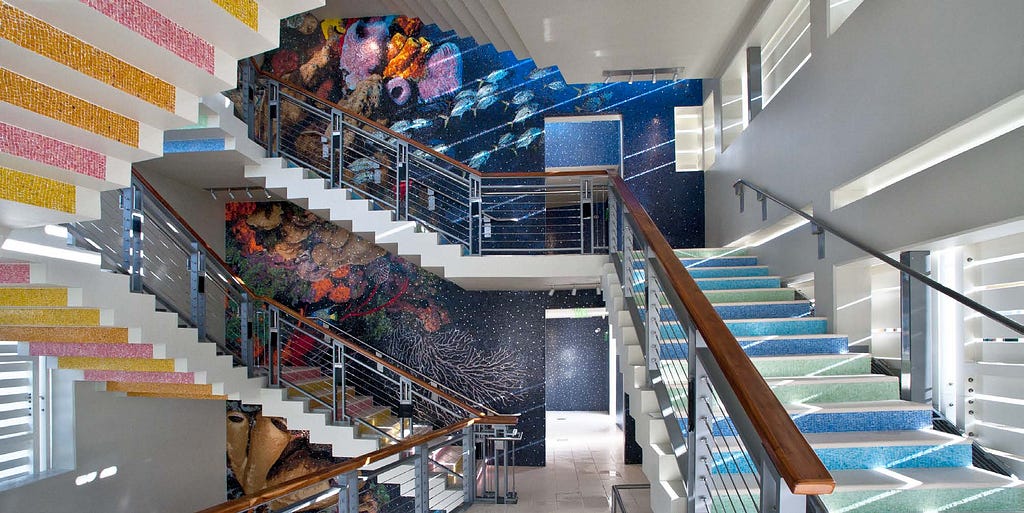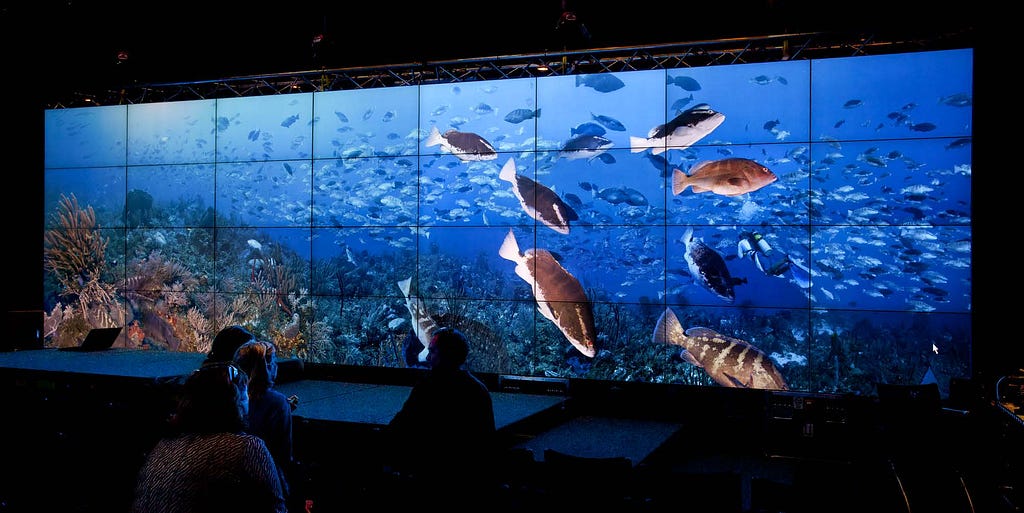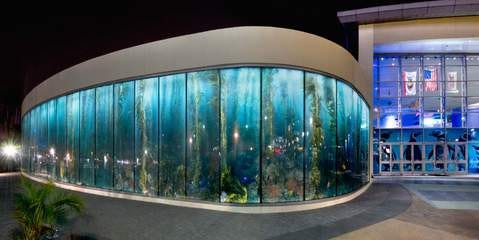The technical limitations of underwater photography have confined the art form to a somewhat limited variety of compositions. What you normally see from underwater photographers are mostly images of what’s directly in front of the camera and receiving a high enough amount of light from either ambient or artificial sources. While there are incredible photographers doing incredible work under these limitations, one photographer in particular has innovated a way around this problem, using a lot of light and a lot of technical expertise.
It started in 1999, when Jim Hellemn set out to create a 20 ft by 70 ft image of Bloody Bay Wall in Little Cayman, a world famous reef wall exhibiting some of the richest marine life in the Caribbean. Of course, taking such a large image underwater was impossible at the time. Because of the properties of light in water, only objects shot with a large enough amount of available light are able to be seen with the true colors of the reef visible in the shot. So, the deeper you are, the more artificial light is needed to really capture an image in true detail. Set on capturing an image of a huge section of the wall, Jim had to figure out how to capture hundreds of separate individual images and combine them. He succeeded. And the result was a full image of the entire 20'x70' wall section that was 1.77 gigapixels, in high enough resolution to reproduce in a life-sized image. If that wasn’t significant enough in itself, that image was, at the time, the biggest image ever created. Like, in the world. Ever. And since then, only a handful of images have surpassed that size, none of them underwater.

It turns out that using that technique proved to be effective in creating amazing underwater landscape imagery of many kinds, including images of many different types of ecosystems and underwater life. Jim’s projects would bring him all over the world to some of the world’s best diving locations, including Malaysia, the Philippines, The Cayman Islands, the Socorro Islands, and the Channel Islands to create large-format images highlighting these incredible environments. His art recreated rich scenes of vibrant underwater life that exists in each of these unique locations, and some amazing projects spawned from the super high-resolution and colorful imagery.
In addition to being featured in National Geographic Magazine in 2001, Jim has been a part of several other high-profile projects. He was commissioned to create an image for the new Camana Bay observation tower on Grand Cayman island. The vertical image, shot on a dive site on the island, features an amazing amount of life and was rendered in millions of hand-cut Italian glass tiles. He also did projects with the Cayman Islands Department of Environment, capturing imagery of the incredible Nassau Grouper Spawning event on Little Cayman, showcasing the awe-inspiring and crucially important biological event that keeps the endangered species alive.


Similarly, the Aquarium of the Pacific in Long Beach used images of California Giant Kelp Forests to create a 12'x125', two-way rendering embedded in glass panels that line the gift shop next to the Aquarium’s entrance. The hundreds of still images used were shot off of San Clemente Island of the coast of Southern California.

Working with a group of researchers studying coral fluorescence, Jim later produced a series of images showing the luminescent properties of corals, used by the researchers in studying and identifying coral species. The resulting images were showcased at the traveling “Creatures of Light” exhibit, which has been hosted at many different venues across the US, most notably the American Museum of Natural History.
Recently, Jim has been working on new underwater cinematography techniques and innovations, producing video content for Blue Ocean Art, Blue Ocean Experience, and other collaborative projects like the documentary project “Mercy, Love, and Grace: the Story of Force Blue” along with other members of the BOE team. We will go into detail about that awesome organization and project in a future post!
There are many factors that go into what makes Jim Hellemn’s work so special. From his self-designed, custom camera rigs, to the innovative concepts behind digital image stitching and creating panoramic underwater landscapes, Jim has pioneered a type of underwater work not seen in the underwater photography world before.
Originally published at https://blueoceanart.com on September 2, 2019.
